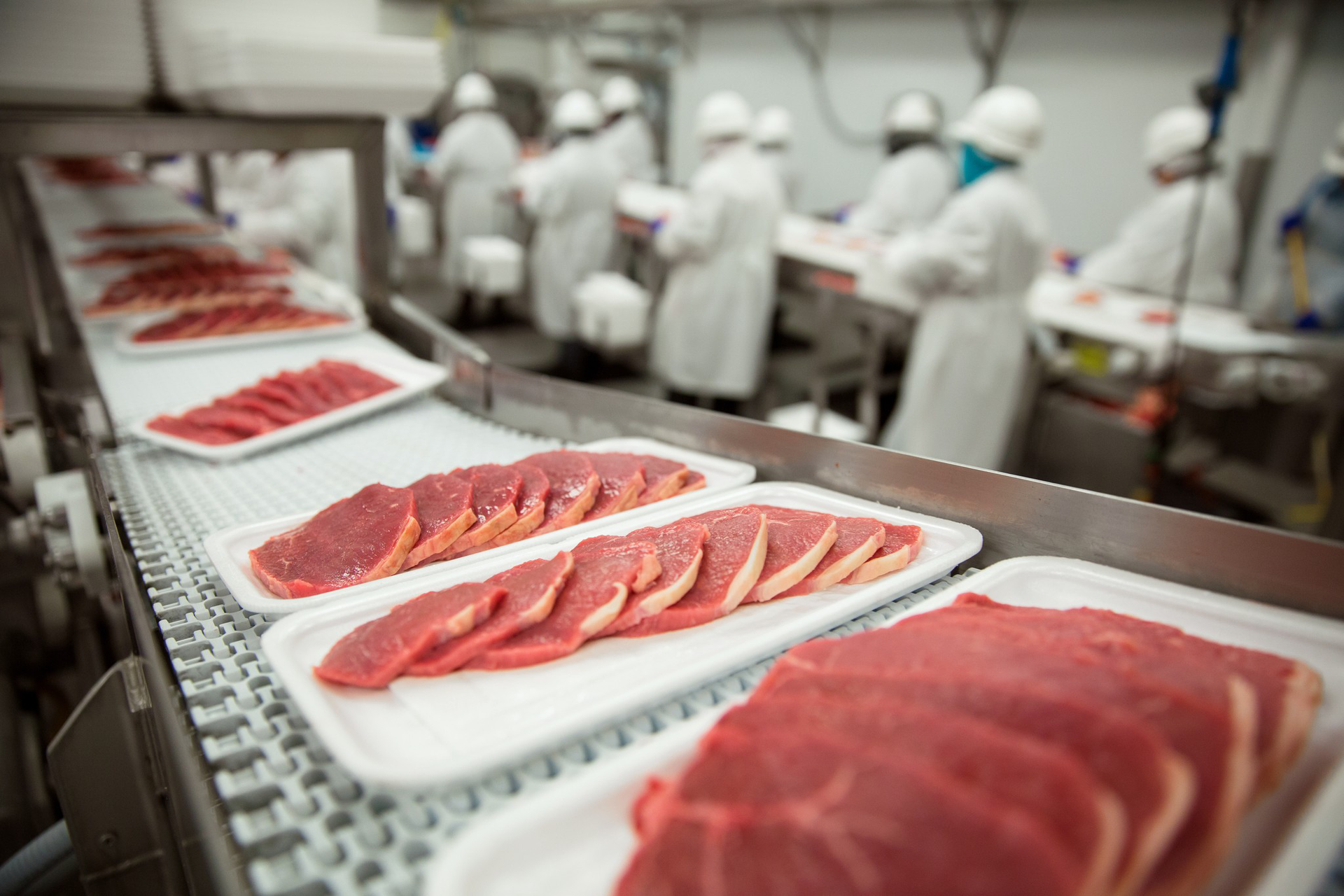HACCP stands for Hazard Analysis and Critical Control Points and is a concept upon which all internationally recognized food safety management programs are built. For food processors and manufacturers, understanding HACCP is crucial for the implementation of systems and procedures that minimize risks, protect consumers, and maintain a company's reputation.
In this article, Sesotec experts for food safety and detection of contaminants explain what HACCP is, why the concept is so important in the food industry, and what the implementation of a HACCP program involves.

What is HACCP?
HACCP is an internationally recognized method for reducing risks to food safety in the production, processing, and handling (e.g., transport and storage) of food. The HACCP concept includes the identification and evaluation of all potential food safety hazards in order to establish a procedure for proactive control and risk reduction.
HACCP particularly focuses on the control of avoidable and eliminable food safety risks based on two critical control points:
- The hazard analysis refers to the identification and analysis of food safety risks present in the processes of a food processing facility. The focus of the hazard analysis is especially on evaluating potential sources of microbiological, chemical, and physical contamination.
- Critical control points refer to key points in a food processing process at which controls can be applied to prevent or eliminate food safety hazards or to reduce the risk to an acceptable level.

Why is HACCP important in the food industry?
As a proactive process control system, HACCP is of crucial importance in identifying, preventing, and better protecting consumers from hazards in food production. Instead of merely controlling the main food risks after processing and packaging food, a HACCP plan involves strict monitoring of every step in the food production process to prevent any contamination hazards from occurring.
When is the implementation of a HACCP plan required?
Due to its effectiveness in preventing contamination hazards, the HACCP methodology is the basis for all internationally recognized guidelines and numerous food safety laws. In order to obtain food safety certification for a program accredited by the Global Food Safety Initiative (GFSI), an effective HACCP plan must be implemented and documented without exception.
Examples of international food safety certification programs that require the implementation of a HACCP plan include, among others:
• BRCGS (Brand Reputation Compliance Global Standards, formerly BRC)
• FSSC 22000 (Certification of the food safety system according to ISO 22000)
• IFS (International Featured Standards)
• SQF (Safe Quality Food)
How do you develop a HACCP plan?
The development of a HACCP plan comprises two planning phases. The preparatory phase of creating a HACCP plan involves understanding the specific conditions, products, and processes within a company. In the second phase, the HACCP framework is applied to create an implementation plan, which is adapted to the company’s requirements.
Five preparatory steps in developing a HACCP plan
Before a food company can begin developing a HACCP plan, five preparatory steps must be carried out. Each of these HACCP planning steps helps the company gain a comprehensive understanding of the risks and responsibilities in the food processing facility.
- Establishing a dedicated HACCP team - Companies first establish a team that is responsible for developing the HACCP plan. This team may consist entirely of in-house employees or be supplemented by external food safety experts in a consulting capacity. The resources assigned to the HACCP team should also be determined during this preliminary phase.
- Describing the products and processes - In this step, the HACCP team creates detailed descriptions of all the food products manufactured in the facility as well as the processes in place. These descriptions should also include information about where and how the product is to be used, how it is packaged and labeled, and considerations regarding shelf life and temperature.
- Compiling a complete list of ingredients and raw materials - Listing and categorizing all the ingredients and raw materials used in a food product or process can help companies identify risk areas. The list should include all primary and additive ingredients, all raw materials, as well as packaging or casings processed by the company.
- Developing a process flow diagram - Starting from the receipt of raw materials, through the completion of the products, to the dispatch of goods, every single processing step carried out within the facility should be depicted in a process flow diagram. This diagram serves as an accurate representation of product manufacturing in the facility and should be verified using an exemplary procedure in the facility.
- Ensuring that hygiene requirements are met - Adherence to legal hygiene regulations forms a solid foundation and is a prerequisite for developing a HACCP plan.
After completing the preliminary planning phase, the HACCP team can begin to develop a plan.
The seven steps of a HACCP plan
The HACCP framework comprises seven basic principles, each of which must be included in the written HACCP plan.
- Conducting a hazard analysis - The hazard analysis is a procedure in which all processes carried out in a food processing facility are examined for the risk (or likelihood) of contamination. Hazard analyses are carried out in two steps. First, all potential hazards are identified; in the second step, these hazards are evaluated in order to assess the risk they pose to food safety. For example, a company might identify two potential sources of metallic contamination in its products: 1) raw materials that already contain metallic particles entering the facility, and 2) machine wear during processing. The company can then determine that the first case presents a higher risk and the second a rather lower risk.
- Identifying the critical control points - A critical control point (CCP) is an intermediate step or an essential control operation to prevent, eliminate, or reduce the risk to food safety to an acceptable level. Typically, a decision tree is used to identify CCPs. The more processing steps conducted in a given food processing facility, the more CCPs are generally required to adequately control the risk of contamination. For example, a company may determine that the receipt of raw materials constitutes a CCP, during which all incoming goods must be checked for metallic contamination before processing. The company might also designate packaging and subsequent transport as another CCP to catch any metallic contamination that could have entered the product during processing.
- Establishing critical limits - A critical limit is the maximum allowable level of a specific parameter that, if exceeded, indicates an unacceptably high risk to food safety. Critical limits are typically defined by values such as time, temperature, pH, moisture content, electrical conductivity, etc.
- Establishing monitoring procedures for critical limits at CCPs - Procedures are established to consistently monitor the critical limits at each CCP. These procedures describe when and how frequently measurements are taken, who is responsible for their execution or monitoring, and which methods or devices are to be used. In this phase, for example, a procedure for monitoring a metal detector can be defined. This should specify the sensitivity of the metal detector, the persons responsible for monitoring its performance, and the monitoring intervals.
- Determining corrective actions - Corrective actions refer to the established procedures that must be followed when the values at a critical control point deviate from the set critical limits. Primarily, the corrective actions should prevent potentially dangerous food from entering the food chain. Secondly, they should also serve to remedy the underlying cause of the hazard and thus prevent recurrence. In this phase, for example, it may be determined that all product units rejected by the metal detector are to be immediately removed from the production line and subjected to a separate, more detailed inspection procedure so that the contaminant can be traced back to the source of the hazard.
- Verification - The effectiveness of the HACCP plan should be tested and verified through measures such as process audits, finished product inspections, and sample testing. For example, the verification step of a HACCP plan may include the regular calibration of detection devices to ensure they accurately detect and reject foreign objects.
- Records - All of the steps described above should be documented in detail and continuously archived to demonstrate that all food has been produced safely. For example, advanced devices for detecting contaminants are equipped with software that automatically generates and archives reports for each inspected batch. These reports can then be regularly downloaded and stored centrally along with all other food safety records.
Conclusions
HACCP is the basis of all modern food safety management programs. As a systematic approach to preventing contamination hazards, HACCP shifts the focus of food safety from reactive control measures to proactive ones. The ultimate goal of a HACCP plan is to make food as safe as possible. The key point is the identification and continuous monitoring of critical control points that present a potential contamination risk. By creating a HACCP plan, companies in the food industry can identify the processes and technologies they need to ensure the safety of their products.

